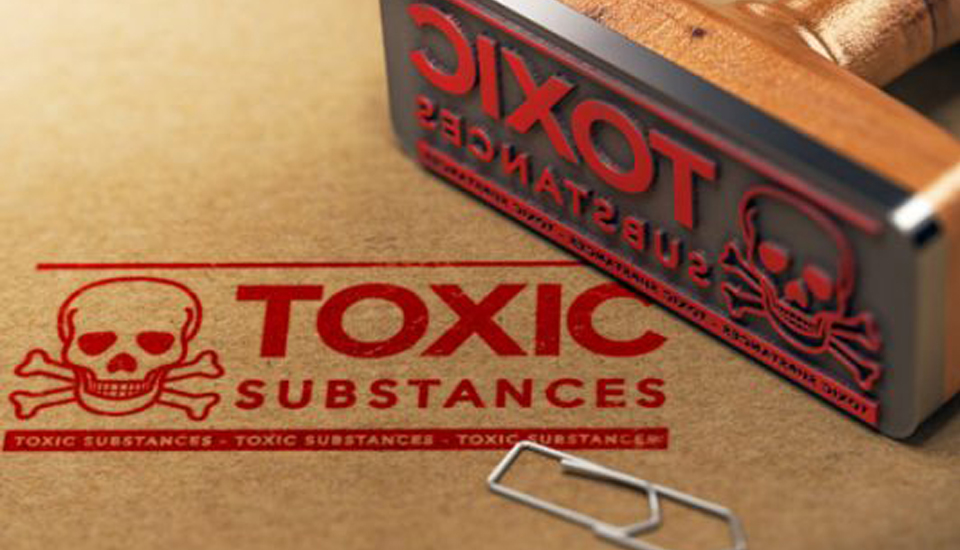5 Household Items That Causes Toxicity You May Not Know About
POSTED ON AUGUST 26, 2019 BY TORONTO FUNCTIONAL MEDICINE CENTRE

Lead, Mercury, Asbestos, and BPA are some of the common toxic substances we know. Researchers have warned us of their harmful effects – possible jeopardizing brain function, including ADD (attention-deficit disorder), kidney damage, compromised immune system, and many more. But did you know other chemicals are hiding in your everyday products that are just as dangerous? Here are five things you need to watch out for, that cause toxicity you may not know about.
- Perfumes and Colognes
If you want to smell good and feel fresh especially when going to work or school, a spray or two of perfume or cologne would do the trick. It may be one of the daily things you do as part of your personal care. However, doing so increases your chances of exposure to harmful chemicals.
According to an article published in LifeHack.Org:
“A study by the Environmental Protection Agency found that potentially hazardous chemicals can commonly be found in fragrances. Toxic chemicals like benzaldehyde, camphor, ethyl acetate, benzyl acetate, linalool, acetone, and methylene chloride can, when inhaled, cause dizziness, nausea, drowsiness, irritation to throat, eyes, skin, and lungs and headaches…”
Sources: https://www.ewg.org/sites/default/files/report/SafeCosmetics_FragranceRpt.pdf
https://pubs.acs.org/doi/abs/10.1021/acs.est.7b04781
So now you may be thinking, “I should read my perfume’s labels and be on the lookout for the harmful ingredients!” Unfortunately, this is not possible. According to the US Food and Drug Administration on Labeling of Fragrance Ingredients:
“If a cosmetic is marketed on a retail basis to consumers, such as in stores, on the Internet, or person-to-person, it must have a list of ingredients. In most cases, each ingredient must be listed individually. But under U.S. regulations, fragrance and flavor ingredients can be listed simply as “Fragrance” or “Flavor.”
Here’s why: FDA requires the list of ingredients under the Fair Packaging and Labeling ActExternal Link Disclaimer (FPLA). This law is not allowed to be used to force a company to tell “trade secrets.” Fragrance and flavor formulas are complex mixtures of many different natural and synthetic chemical ingredients, and they are the kinds of cosmetic components that are most likely to be “trade secrets.”
You can read the full details here.
- Sunscreens
After months of being cooped up because of the extended winter season, people are excited to go outdoors and enjoy some sun time swimming in beaches and lakes, going on hiking trips, taking bike rides, or even just at the comfort of your backyard. If you are like most people, you would lather some sunscreen to protect yourself from getting sunburned. However, chemicals used in most sunscreens can be absorbed into the body which prompted the FDA to consider its safety.
A non-profit, non-partisan organization called EWG (Environmental Working Group), dedicated to protecting human health and the environment, conducted some research on sunscreens and this is what they found out:
“EWG has reviewed the existing data about human exposure and toxicity for the nine most commonly used sunscreen chemicals. The most worrisome is oxybenzone, which can cause allergic skin reactions (Rodriguez 2006). In lab studies, it is a weak estrogen and has potent anti-androgenic effects (Krause 2012, Ghazipura 2017).”
Learn more on “The Trouble With Ingredients in Sunscreens“.
FDA New Proposed regulation on Sunscreens: https://www.fda.gov/news-events/press-announcements/fda-advances-new-proposed-regulation-make-sure-sunscreens-are-safe-and-effective
- Baby Food
Yes, you’ve read it correctly. There are pesticides found in baby foods, particularly Organophosphates. Author Jody Braverman has this to say in her article “12 Dangerous Chemicals to Avoid in Everyday Products“:
“When you’re making a choice between organic and conventional on your next visit to the grocery store, you’ll want to take into consideration organophosphates — one of the most common and most toxic pesticides used in agriculture — and their potential dangers, especially if you have young children. According to the Environmental Working Group, more than 1 million children under the age of 6 consume an unsafe amount of organophosphates each day, and for infants, commercial baby food is the major source of unhealthy amounts of the chemical. Outcomes associated with organophosphates pesticide exposure to the fetus include abnormal primitive reflexes in newborns; mental and motor delays among preschoolers; and decreases in working and visual memory, processing speed, verbal comprehension, perceptual reasoning, and IQ among elementary school–age children. Prenatal exposures also elevated risks for symptoms or diagnoses of attention-deficit/hyperactivity disorder (ADHD) and autism spectrum disorder (ASD).
One of the best things you can do for your family is to choose organic products. If cost is an issue, American Academy of Nutrition and Dietetics spokesperson and registered dietitian Heather Mangieri, recommends rinsing produce thoroughly before eating it.”
- Dry-Cleaning Solutions
We thought them to be safe. Unfortunately, most dry-cleaning solutions, even spot removers and upholstery cleaners contain Perchloroethylene or “PERC”. Jessie Sholl, one of the writers of the award-winning health and fitness magazine Experience Life, wrote:
“Perc is a neurotoxin, according to the chief scientist of environmental protection for the New York Attorney General’s office. And the EPA classifies perc as a “possible carcinogen” as well. People who live in residential buildings where dry cleaners are located have reported dizziness, loss of coordination and other symptoms. While the EPA has ordered a phase-out of perc machines in residential buildings by 2020, California is going even further and plans to eliminate all use of perc by 2023 because of its suspected health risks. The route of exposure is most often inhalation: that telltale smell on clothes when they return from the dry cleaner, or the fumes that linger after cleaning carpets.”
- Fabric Softeners
In an article by organicauthority.com, they listed some of the toxic chemicals found in commercial fabric softeners. They are:
- Alpha Terpineol: can cause central nervous damage and respiratory problems
- Camphor: causes central nervous disorders, is easily absorbed through skin
- Chloroform: a carcinogenic neurotoxin
- Benzyl Acetate: linked to pancreatic cancer
- Benyl Alcohol: respiratory tract irritant
- Ethanol: on the EPA’s “hazardous waste” list, can cause central nervous system disorders
- Ethyl Acetate: a narcotic on the EPA’s “hazardous waste” list
- Limonene: a known carcinogen that irritates eyes and skin
- Linalool: causes central nervous system disorders and depresses heart activity
Furthermore, NCBI published a study on Respiratory toxicity of fabric softener emissions with this abstract:
“To determine whether there is any biological basis for complaints that fabric softener emissions can cause acute adverse effects in certain individuals, screening tests were performed in which groups of mice were exposed to the emissions of 5 commercial fabric softener products (antistatic pads used in laundry dryers) for 90 min. Pneumotachographs and a computerized version of ASTM test method E-981 were used to measure acute changes in several respiratory cycle parameters, especially the pause after inspiration, the pause after expiration, and the midexpiratory airflow velocity. From these changes, sensory irritation (SI), pulmonary irritation (PI), and airflow limitation (AFL) of differing intensities were measured with each of the five brands tested. At the peak effect, SI ranged from 21 to 58% of the breaths, PI ranged from 4 to 23% of the breaths, and AFL ranged from 6 to 32% of the breaths. After three exposures, histopathology revealed mild inflammation of interalveolar septae of the lungs. Gas chromatography/ mass spectroscopy (GC/MS) analysis of the emissions of one pad identified several known irritants (isopropylbenzene, styrene, trimethylbenzene, phenol, and thymol). Laundry that had been dried with one the fabric softener pads emitted sufficient chemicals to elicit SI in 49% of breaths at the peak effect Placing one fabric softener pad in a small room overnight resulted in an atmosphere that caused marked SI (61% of breaths). These results demonstrate that some commercial fabric softeners emit mixtures of chemicals that can cause sensory irritation (SI), pulmonary irritation (PI), and reduce midexpiratory airflow velocity in normal mice. The results provide a toxicological basis to explain some of the human complaints of adverse reactions to fabric softener emissions.”
The number of toxic substances we are exposed to can be overwhelming. We may not fully avoid them, but there are measures we can take to lessen our exposure. Here’s some good advice courtesy of the New York Department of Health:
Before you use a product, read the label carefully and follow the instructions. Pay attention to warnings on the label.
Use proper ventilation. Ventilation means getting fresh air into your home or workplace. When using strong chemicals, open your doors and windows whenever the weather permits. When you use a toxic chemical indoors, you may wish to blow air out the window with a fan. Have another window or door open to let fresh air into the room. If you use chemicals in your hobbies, use them outdoors or in a well- ventilated area away from your living space.
Wear appropriate protective gloves when handling chemicals. If you use substances that are harmful to breathe (like fiberglass which can lodge in the lungs), use an appropriate mask.
Store chemicals safely and out of the reach of children. Label all containers and do not store liquids in commonly used household containers such as soda bottles or food cans.
If clothes become soiled while handling chemicals, change clothes as soon as possible to reduce exposure. Wash soiled clothes separately; then run the machine through a rinse cycle to clean it before washing more clothes.
If you must use a toxic substance, buy only the amount needed so there will be less material left for storage or disposal.
Try to avoid using a toxic substance. If that is not possible, choose products that have less toxic ingredients. For example, water-based paints are generally less toxic than oil-based paints.
More here: https://www.health.ny.gov/environmental/chemicals/toxic_substances.htm
At Toronto Functional Medicine Centre, we recommend that you use natural household cleaning products, choose organic foods when possible , avoid fragrance and give your personal care products a makeover. You can consult with our healh practitioners if you need more information on how naturopathic medicine may help you detoxify and achieve your personal wellness goals. Call (416) 968-6961 to book an appointment.
Recommended Reading: A Naturopathic Approach to Chronic Inflammation

